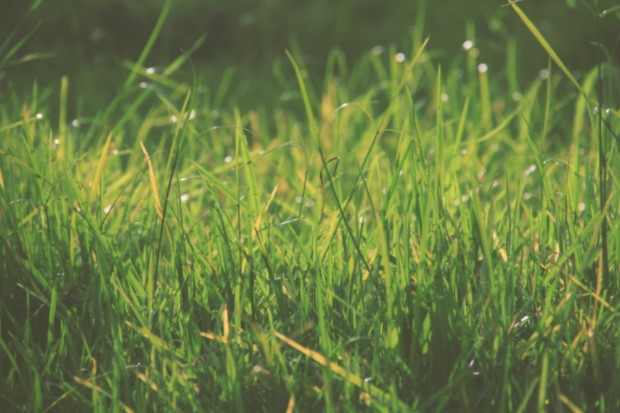
Palmetto Grass: What Makes It Magical?
Lawns and turfs need a lot of maintenance and care. So imagine if we told you about a type of grass so luscious and easy to maintain, you wouldn’t believe us. That’s right. We’re talking about the ultimate Buffalo grass: Palmetto grass.
Palmetto grass is famous for its emerald color in winter. It has a high shade tolerance – it can survive in areas of low light quite comfortably.
This soft grass has wear tolerance that’s off the charts. With a deeply entrenched root system in the soil, Palmetto is also drought resistant.
But before we dive straight into the benefits, let’s talk about why choosing the right grass for your turf is important.
The Right Type of Grass
If you’re new to the gardening scene, you probably have no idea how difficult it is to maintain a lawn.
Weekly mowing is a must, and pulling out weeds will be a neat workout session for you.
Lawns use up most of your water and fertilizer stocks. Whether they’re natural or not, these turfs can put a huge dent in anyone’s bank account.
For example, consider the tools required to maintain a lawn. You’ll need a power tool such as a lawnmower for an even meadow. Manually cutting will only make it worse, especially if you’re new.
So in these situations, finding grass that’s relatively low maintenance is a relief beyond description.
Palmetto makes life easier for gardeners and landscapers alike.
Benefits of Palmetto Grass
Now that we’ve fully understood the value of good grass let’s dive deeper into the benefits.
Winter Colors
In winter, grass tends to lose color and become extraordinarily yellow or white.
That can reduce the curb appeal of your overall garden. To prevent this, Palmetto is the best choice for you.
Our research suggests that Palmetto gives life to snowed out areas once the snow has been taken away. Many also report not feeling like winter ever came.
In peak season, it has a bright emerald color that reflects sunlight with bright flair. It can also retain this color during the frosty winter for long periods.
Thus, even on a winter morning, you can walk through the garden and have a warm cup of hot chocolate in the evergreen meadow.
Low Maintenance
Since Palmetto grows slower than most grass types, you don’t need to mow it so frequently. So it doesn’t need a lot of maintenance.
Palmetto isn’t like unkempt hair that loses shape or form without grooming. It holds its natural tidiness and doesn’t grow too tall.
Due to less thatch and untidiness, Palmetto grass is far more even.
Since it has a greater wear tolerance and shade tolerance, it only needs about 3 hours of direct sunlight every day.
For renovation purposes, Palmetto maintains its reputation (the puns are getting worse). It is also less invasive. Thus, it’s easier to extract from plant beds.
Any rough edges are smoothed out using edgers.
Thus, this is truly greenery fit for turf with an even shine and lower maintenance.
Combating Weeds
Despite its soft texture, Palmetto grass can be quite dense.
Palmetto holds on to the soil tightly with a firm anchor to the ground due to its roots.
In such cases, weeds cannot compete with the dense greenery.
Hence, Palmetto is also popular for outcompeting weeds and preventing their growth.
If worst comes to worst, worry not. Keep a spare weedicide to spray and get rid of weeds quickly. If you don’t have one, manual eradication will have to do.
However, this is very unlikely to happen due to the reasons stated above.
The advantage of reduced weed growth is paramount. Weeds reduce the resources your flowers and grass receive.
This slows down and diminishes their growth.
So preventing the overall formation of weeds is crucial for a pleasant garden.
Pests and Disease Control
As you may have guessed, Palmetto grass is incredibly resistant to insects and pests.
But it’s always better to be safe than sorry. You can still buy a couple of insecticide or pesticide cans in emergencies.
Watch out for some nasty looking lawn grubs that can eat away the magnificent grass.
Examples include chinch bugs, armyworms, or the African dung beetle. These frequently cause damage and must be stopped at all costs.
Palmetto is almost immune to plant-based diseases, except for a few.
Two diseases called Brown Patch or Grey Leaf Spot can cause long-term damage.
With Brown Patch, circular patches of little to no grass keep on increasing in size. This happens more commonly in humid weather, i.e., during spring or autumn.
To control these diseases, contact your nearest specialist and ask for a specific kind of fungicide to cure such conditions.
Watering and Fertilizer
One last property that makes Palmetto extremely low-maintenance is its low water use.
The intricate web system formed underneath visible ground plays a part in this.
Due to the myriad of roots spreading out, Palmetto can easily find remote water sources and pull the necessary hydration from them.
If you’re going to construct this yourself, make sure to remind yourself every day to water the plants. However, if this seems too tedious, just water every 7-10 days. The deep watering will help immensely.
For fertilizers, this depends on where you live, what part of the country you inhabit, and what kind of soil there is.
The timing is essential. You can apply nitrogen-rich fertilizers fully either in April and September. You can experiment with other fertilizers that are more slow-release.
That way, it’ll be a long term investment worth every penny.
Conclusion
Palmetto grass is truly in its own league. We see it has a versatile range of benefits that is suitable for both new and veteran gardeners.
It lasts long while sacrificing little quality. It keeps your soil moist and tight and doesn’t wilt in the shade. But most importantly, it makes your garden look elegant and sleek.
So we hope that with our tips, you can keep your soil healthy and make your turf look refreshing.
Are you worried about whether or not you can fit a lawn in a small garden? Have your questions answered in our guide for small garden designs.


Recent Comments